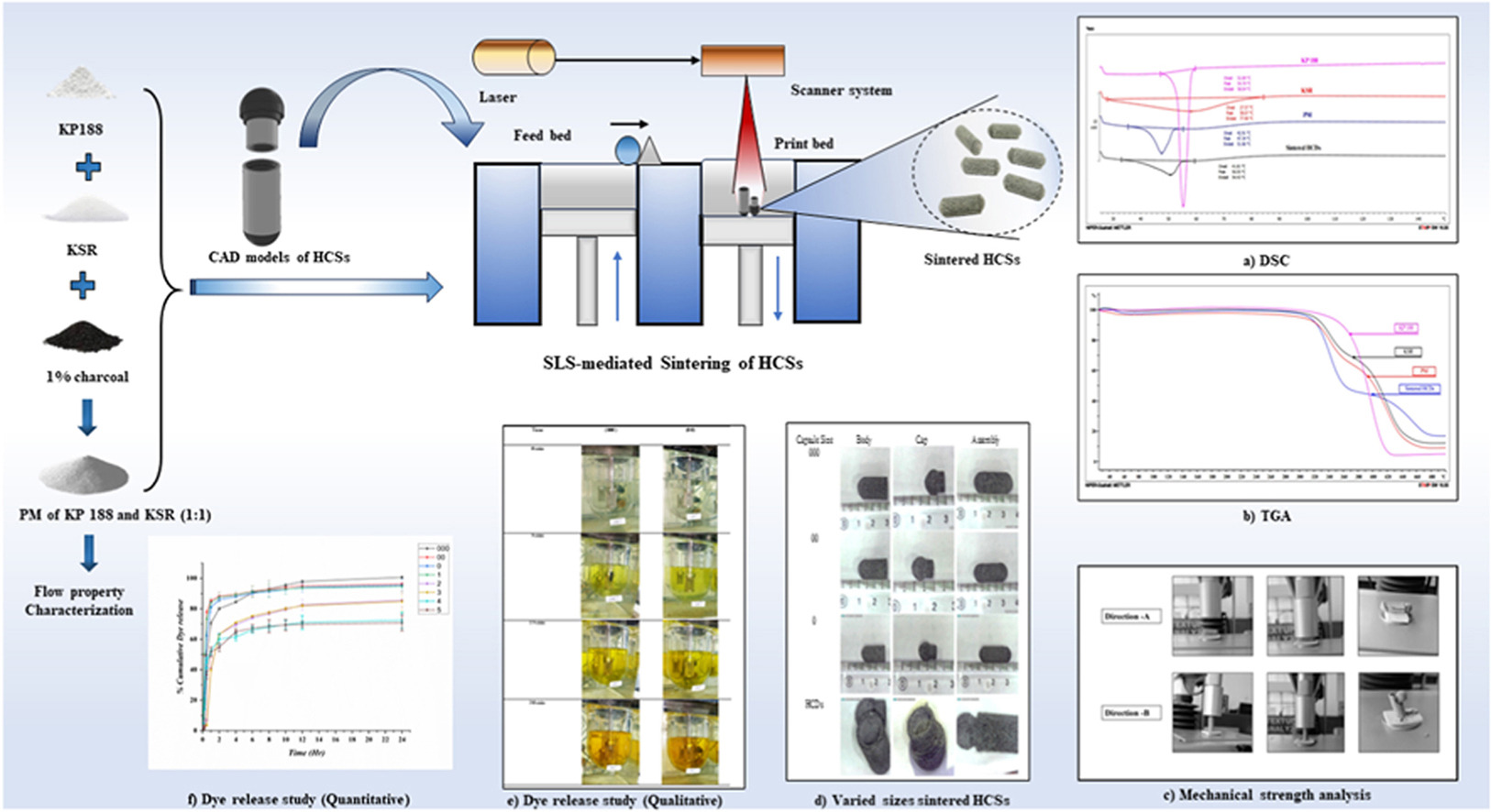Sketching feasibility of additively manufactured different size gradient conventional hollow capsular shells (HCSs) by selective laser sintering (SLS): From design to applications

Additive manufacturing (AM) is widely used to fabricate 3D printed objects from Computer-aided Design (CAD) prepared using the SolidWorks CAD modelling software. Different printing techniques are used to fabricate desired 3D objects; among all these techniques, it is widely accepted that SLS is one of the most effective methods of 3D printing for fabricating drug-loaded solid oral dosage forms (SODFs) in bulk quantities using the single-step process. Different SODFs, such as pills, miniprintlets, dual miniprintlets, and tablets, were fabricated with different sizes and shapes. In this study, for the first time, we introduce SLS-mediated hollow capsular shells (HCSs) with the help of the SLS 3D printing technique. This work aimed to explore the sinterability and feasibility of sketching HCSs using the SLS-mediated sintering technique with different marketed sizes of capsules ranging from 000 to 5. Here, we have utilized Kolliphor P 188 (KP 188) and Kollidon SR (KSR) in a 1:1 ratio as a matrix-forming agent and 1% charcoal as a laser absorption-enhancing material. In accordance with the CAD models, we have fabricated the gradient conventional different sizes of HCSs ranging from 000 to 5 using the constant printing parameters and composition. Fabricated all biobased HCSs were subjected to the assessment of mechanistic and physicochemical parameters using varied analytical tools. In the current study, tartrazine dye is used to assess the release pattern from HCSs, which resulted in the modified release pattern. The adapted approach will be the futuristic approach to replace animal-based gelatin capsules with pharmaceutical-grade polymer-based HCSs with a modified release with optimum mechanical strength.
Materials and methods
Poloxamer 188 micro-P188 (Kolliphor™ P 188 micro) (KP 188) and Kollidon SR (KSR) were purchased from Sigma-Aldrich Chemicals Private Limited, India., KP 188 was utilized as a water-soluble solubility enhancer matrix forming agent, and KSR was utilized as a sustained release matrix forming agent in a 1:1 ratio. Charcoal activated was procured from the TCI (India) Pvt Ltd.
Read more
Ganesh Pandav, Tukaram Karanwad, Subham Banerjee, Sketching feasibility of additively manufactured different size gradient conventional hollow capsular shells (HCSs) by selective laser sintering (SLS): From design to applications, Journal of the Mechanical Behavior of Biomedical Materials, Volume 151, 2024, 106393, ISSN 1751-6161,
https://doi.org/10.1016/j.jmbbm.2024.106393.

